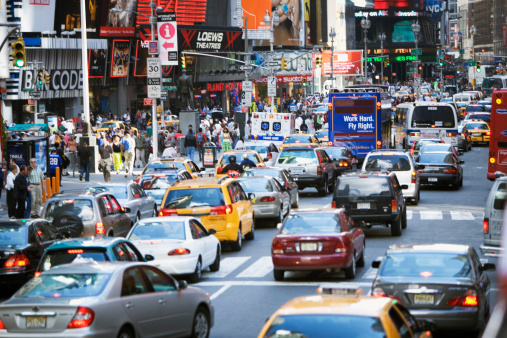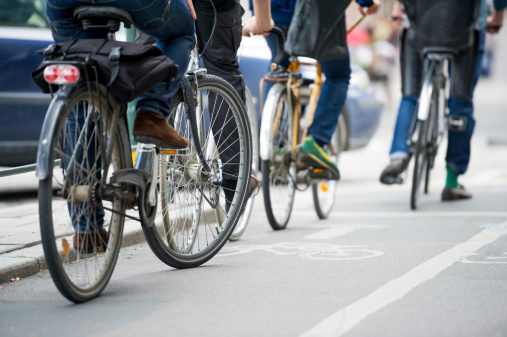
How much land do roads consume in your community?
Transportation is a requirement to get from point A to point B. But that doesn’t always mean that you need a car. Transportation can be a subway, elevated train, bicycle, or even a pair of legs.
The choices that city planners make can determine how the land is used. But people will always react to their surroundings. If nothing is conveniently located and there are few roads for vehicles, the result will be a congested, trafficked mess.
As urban areas grow denser and denser, the way that land is used becomes more critical. This is particularly true when you consider the amount of land that is consumed by personally-owned vehicles. In a recent talk, Bruno Moser, who is the head of Urban Design Group, explained why so many cities got it wrong, and how a different, low-tech approach could be the solution.
Efficient on Paper Isn’t Always Efficient in Reality
Modern development looks neat and tidy when viewed from above. Everything is organized. Everything is on a grid. And the more that logic is applied to urban design, the less people are inclined to walk. That’s not just an observation, but an analyzation of the habits of residents who live in cities on a grid compared to those whose streets aren’t so tidy.
Moser compares the city of Venice, where more people walk, to the city of Phoenix, where more people drive. He explains that part of the appeal of walking is made up of visual interest, proximity of conveniences and necessities, and the chance of meeting a friend. If the closest place to buy food is 5 grid blocks away and there’s little of interest between home and the supermarket, residents are more inclined to drive.

Cities such as New York function perfectly well until you factor in vehicles.
Short-Sighted Planning Changes a Whole City
The grid pattern seemed like a smart idea and a great way to use space efficiently. But what no one apparently counted on was the way that people would use the land. People and businesses spread out. Conveniences clustered, spread out too much, or both. And a vehicle became necessary to get to and from work, and to buy the essentials of life.
In a city like New York, the population density and erratic arrangement of streets would make any observer believe that it’s everything but convenient. But subways are prevalent, and few people own vehicles at all. Anything from shopping and entertainment to places of employment are either a walk or a ride on public transportation away. But try to wedge a vehicle into the mix, and efficiency turns into chaos. People and public transportation get along perfectly. Cars are an unnecessary burden on the city.

Bicycle and pedestrian traffic is much smaller and public transportation is denser than what’s needed for cars.
Valuable Land is Wasted on Supporting Vehicle Traffic
A related problem with cities where residents rely primarily on vehicles is that the landscape becomes dominated by cars and the roads necessary to use them. Road construction continues in large urban areas, with more and wider lanes needed to accommodate a growing population that has an increased reliance on vehicles. The focus is on the cars, not the people, and more landscape is committed to the infrastructures needed to support them.
Where public transportation and walking prevail, the differences are fairly clear. Walkways are convenient. They’re not a hazard that requires pedestrians to rush and navigate around vehicles. Ample transportation ports give people plenty of convenient access to trains, buses and subways instead of requiring a 4-block hike to reach one packed station that serves too wide of an area. And the necessities and convenience of life are located where people can easily reach them without taking a journey.
Transportation is necessary, but our approach to it is not. Moser suggests that the advances many urban planners once embraced have become the very undoing of the efficiency they were supposed to create. Instead of making life better for people, urban planning too often revolves around vehicles. If there’s to be a change for the better, appropriation for land use needs a new direction.
Architecture is about people and communities, and finding ways to make life better. And the way to stay on top of that is through continuing education and being active in your community. Check out our courses at PDH Academy the next time your professional development hours requirement is due.






